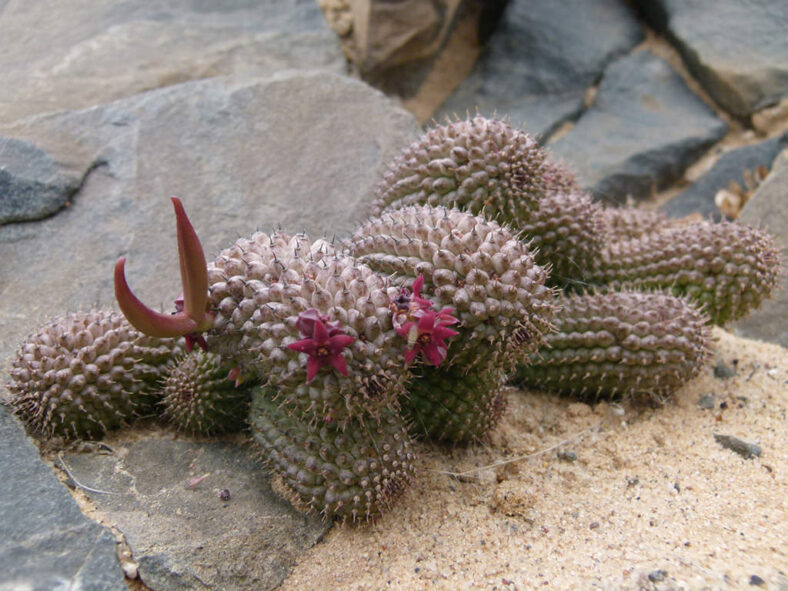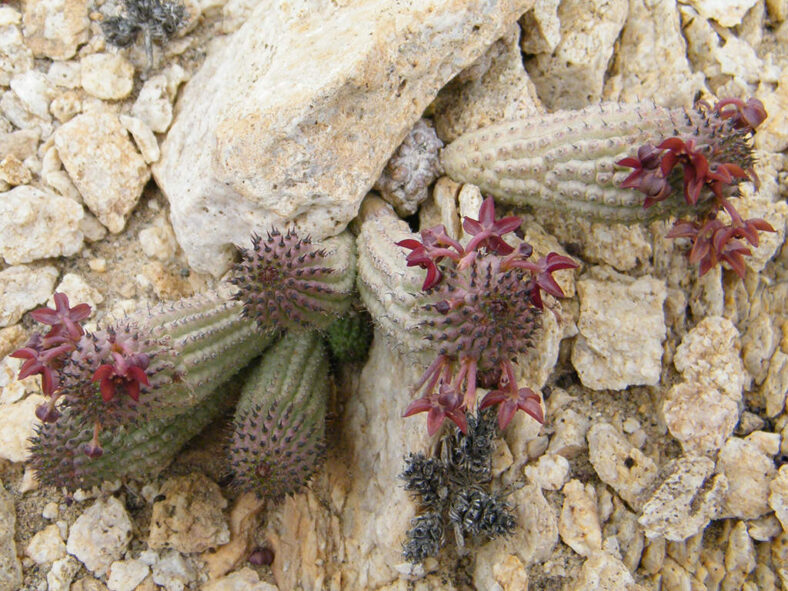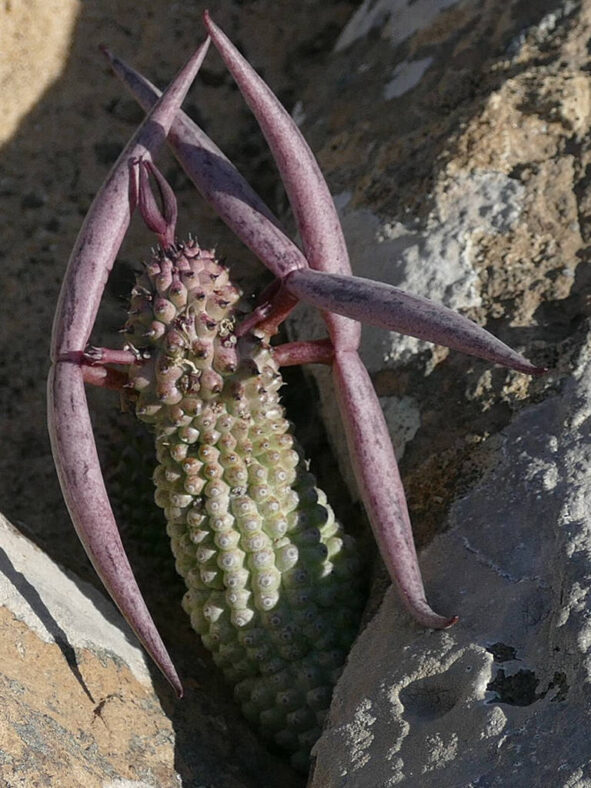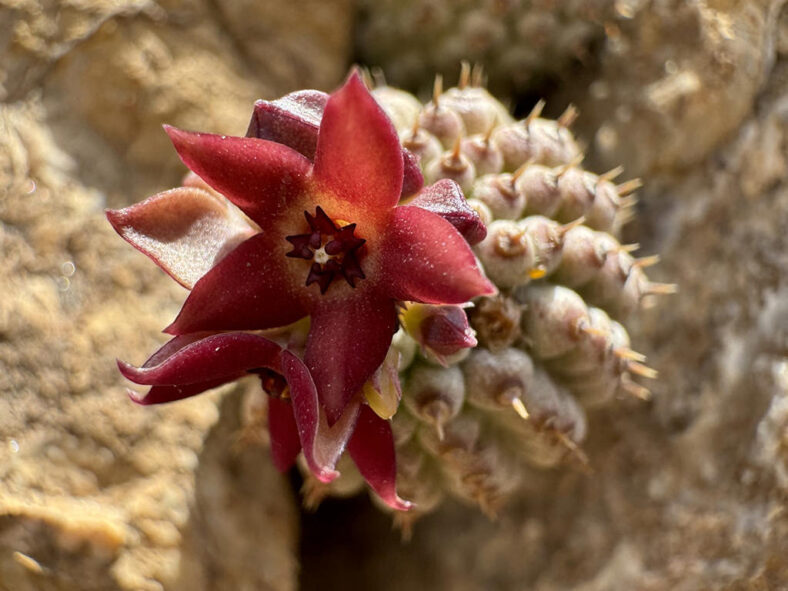Hoodia pedicellata is a rare species found in succulent collections. It was first described by Hans Schinz in 1888 as Trichocaulon pedicellatum.
Scientific Name
Hoodia pedicellata (Schinz) Plowes
Synonym(s)
Ceropegia pedicellata, Trichocaulon pedicellatum
Scientific Classification
Family: Apocynaceae
Subfamily: Asclepiadoideae
Tribe: Ceropegieae
Genus: Hoodia
Etymology
The specific epithet "pedicellata" (pronounced "ped-ih-sel-LAH-ta") means "having (or supported by) a pedicel, pedicellate" and refers to the flowers of this species that appear on long pedicels.
Origin
Hoodia pedicellata is native to the Namib Desert, from Swakopmund in western Namibia to Foz do Cunene in southwestern Angola.
Description
Hoodia pedicellata is a succulent plant that forms a clump of cylindrical stems with tubercles joined in the lower half into 11 to 20 ribs. The stems can grow up to 10 inches (25 cm) long and reach a diameter of 2 inches (5 cm). While they initially grow erect, the stems may later develop a creeping growth habit. The color of the stems varies from gray-green to gray-brown, and each tubercle ends in a sharp, dark brown spine.
From spring to fall, particularly in summer, Hoodia pedicellata produces star-shaped, deeply-lobed flowers on long pedicels, primarily located at the upper parts of the stems. The flowers can reach a diameter of 0.6 inches (1.5 cm) and may appear solitary or in groups of up to four, developing successively. The pedicels can be as long as 0.5 inches (1.2 cm). The corolla is smooth both on the center and exterior, with the inside of the lobes covered with fine papillae. Its colors can range from chestnut to shades of crimson, and different colors may be present on the same plant simultaneously. The corona is smooth and can be either crimson or yellow. The fruits are pairs of pink follicles, each measuring up to 2.8 inches (7 cm) in length and containing 25-30 seeds.

How to Grow and Care for Hoodia pedicellata
Light: Hoodia pedicellata prefers full sun but benefits from light shade on the hottest summer days. Indoors, place the plant near the brightest window in your home, as it will stretch if it does not receive enough sunlight. Avoid abruptly moving a plant adapted to lower light levels to full sun to prevent sunburn.
Soil: Use a commercial potting soil mix designed for succulents or prepare your own by mixing 50% to 70% mineral grit, such as coarse sand, pumice, or perlite.
Temperature: The plant thrives in warm outdoor environments with low to moderate humidity. It does not like winter cold and should remain relatively dry and warm during its dormancy. Hoodia pedicellata grows best in USDA Plant Hardiness Zones 10a to 11b, with average minimum winter temperatures ranging from 30°F to 50°F (-1.1°C to 10°C).
Watering: It has typical watering needs for a succulent. During the growing season, from spring to fall, water the plant thoroughly and allow the soil to dry between waterings. When it goes dormant in winter, it needs almost no water, about once a month.
Fertilizing: Feeding is beneficial for keeping this plant healthy and thriving. Use a water-soluble fertilizer diluted to half-strength, but only when the plant is actively growing.
Repotting: Repot Hoodia pedicellata in spring, just before the growing season. It has shallow roots and does not require a lot of soil to grow. Always pick a container with drainage holes.
Propagation: The best way to propagate this succulent is by stem cuttings. To ensure good rooting, take cuttings during the growing season. The plant is also easy to start from seeds in spring.
Learn more at How to Grow and Care for Stapeliads.
Toxicity of Hoodia pedicellata
Hoodia pedicellata is non-toxic and safe to grow around kids and pets.
Links
- Back to genus Hoodia
- Succupedia: Browse succulents by Scientific Name, Common Name, Genus, Family, USDA Hardiness Zone, Origin, or cacti by Genus
Photo Gallery
Click on a photo to see a larger version.


